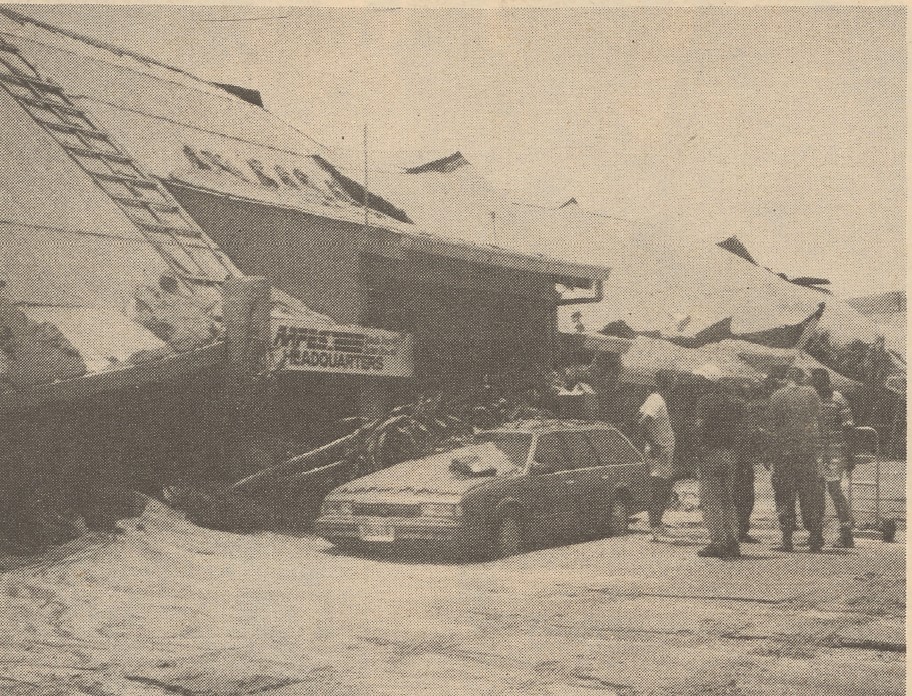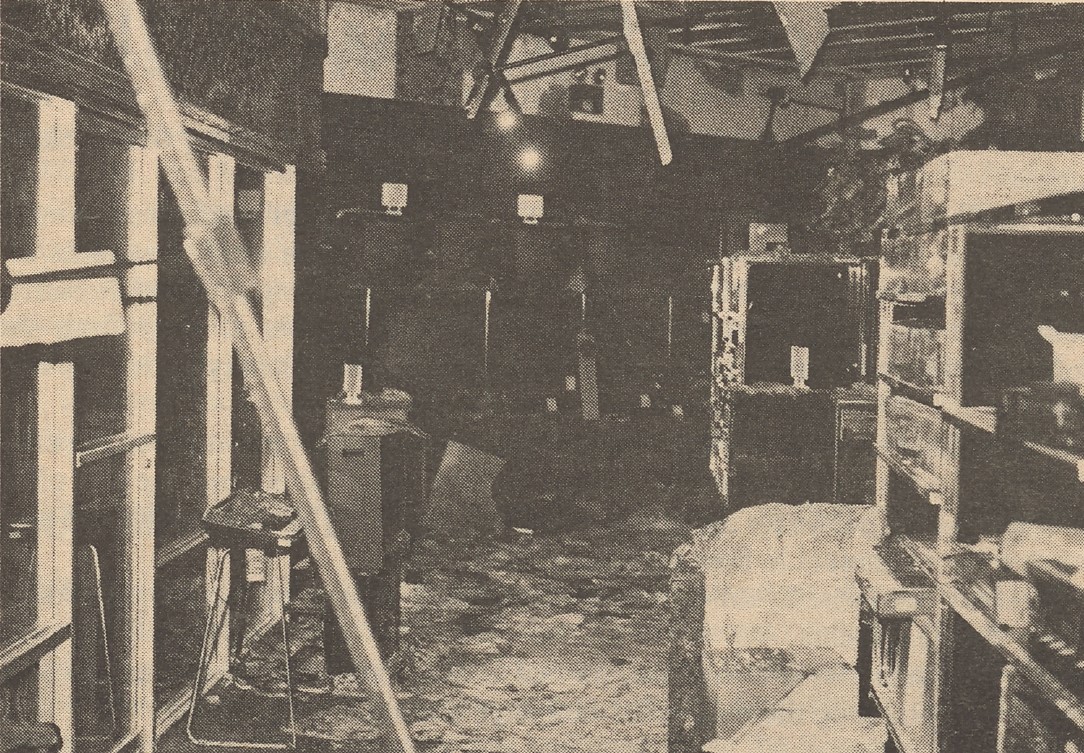In June 1991, 34 years ago this month, Mount Pinatubo in the Philippines erupted for the first time in 600 years. The eruption would lead to the closing of Clark Air Base and the end of nearly a century of Exchange operations in the Philippines.
Two months earlier, people living at Clark began noticing a plume of steam rising from the mountain ridge west of the base. For many, it was the first time they knew that there was a volcano nearby.
The steam seemed minor—at first. Then concerns grew about a possible eruption. At a June 9 staff meeting, the Exchange’s South Pacific Sales District commander announced that all non-essential personnel would have to evacuate Clark. Exchange associates and their families joined more than 15,000 military personnel and their families as they relocated to Subic Bay Air Base, 35 miles south of Clark.
On June 12, the volcano erupted, sending an ash column 12 miles into the sky. Additional explosions occurred overnight and the morning of June 13. Seismic activity during this period became intense.
A small Exchange team had remained at Clark, working on loading food supplies to transport to Subic Bay. While they were in a freezer unit collecting supplies, the power went out. As the team tried to figure out what happened, they heard screeching wheels outside. The wheels belonged to District Manager Wayne Henry, who had driven up to tell them that the volcano had erupted and they needed to “get the hell out of there.”
At least one team member paused to capture a little bit of history.
“I remember standing inside a doorway and looking up at this giant gray cloud of ash coming right at us,” Security Operations Specialist George Shaffer told The Exchange Post. “It was the most amazing thing I had ever seen. I decided to get my camera and take some pictures. I figured, if I was able to live through this, I definitely wanted to have something to show for it.”

The team was evacuated to Mount Aryat, about 12 miles away. When they were able to safely return to Clark, the team managed to load about $1 million worth of cash and jewelry into a van and head toward Subic Bay. The 35-mile trip took them an hour and a half. According to one associate, some of the evacuees had to sleep in gyms and bowling alleys at Subic.
The biggest eruption happened June 15. That day, more highly gas-charged magma reached Pinatubo’s surface and the volcano exploded. The ash cloud rose 28 miles into the air. Volcanic ash and pumice blanketed the countryside. Avalanches of hot ash, gas and pumice fragments, called pyroclastic flows, roared down the mountainside, filling once-deep valleys with fresh volcanic deposits up to 660 feet thick. It was the second-largest eruption of the 20th century.
“By midafternoon, the sky had turned dark and began to rain ash down on us,” Safety and Security Manager Bob Reynolds told The Exchange Post. “To top it all off, a typhoon visited the island, dumping heavy, mudlike rain in the process. And just to make life even more interesting, the island was shaken by earthquakes every few minutes.”
Exchange teams set up stores in tents and provided essential support for evacuees at Subic Bay. The Exchange also provided evacuation support at U.S. ports of entry and in Guam, where about 18,000 evacuees arrived at Andersen Air Force Base.
The Exchange’s history in the Philippines dates to 1903, but post exchanges were closed in World War II after Japan invaded the country. After operations resumed in 1945, the Exchange maintained a presence in the Philippines for more than 45 years. During the Vietnam War, Clark Air Base was the first stop for nearly 600 POWs airlifted out of Hanoi. The Clark Exchange was the first store the former POWs would visit.
But Clark suffered heavy damage from the Mount Pinatubo eruption and in November 1991, the decision was made to close the base. A little more than two months later, in late January 1992, the South Pacific Sales District and other Philippine Exchange activities ended. The modern Exchange closest to the Philippines is in Guam, more than 1,500 miles away.
Sources: Exchange Post archives; “The Cataclysmic 1991 Eruption of Mount Pinatubo, Philippines,” by Christopher G. Newhall, James W. Hendley, and Peter H. Stauffer; “Remembering Mount Pinatubo 25 Years Ago” (published June 13, 2016), Department of the Interior, U.S. Geological Survey




Leave a Reply